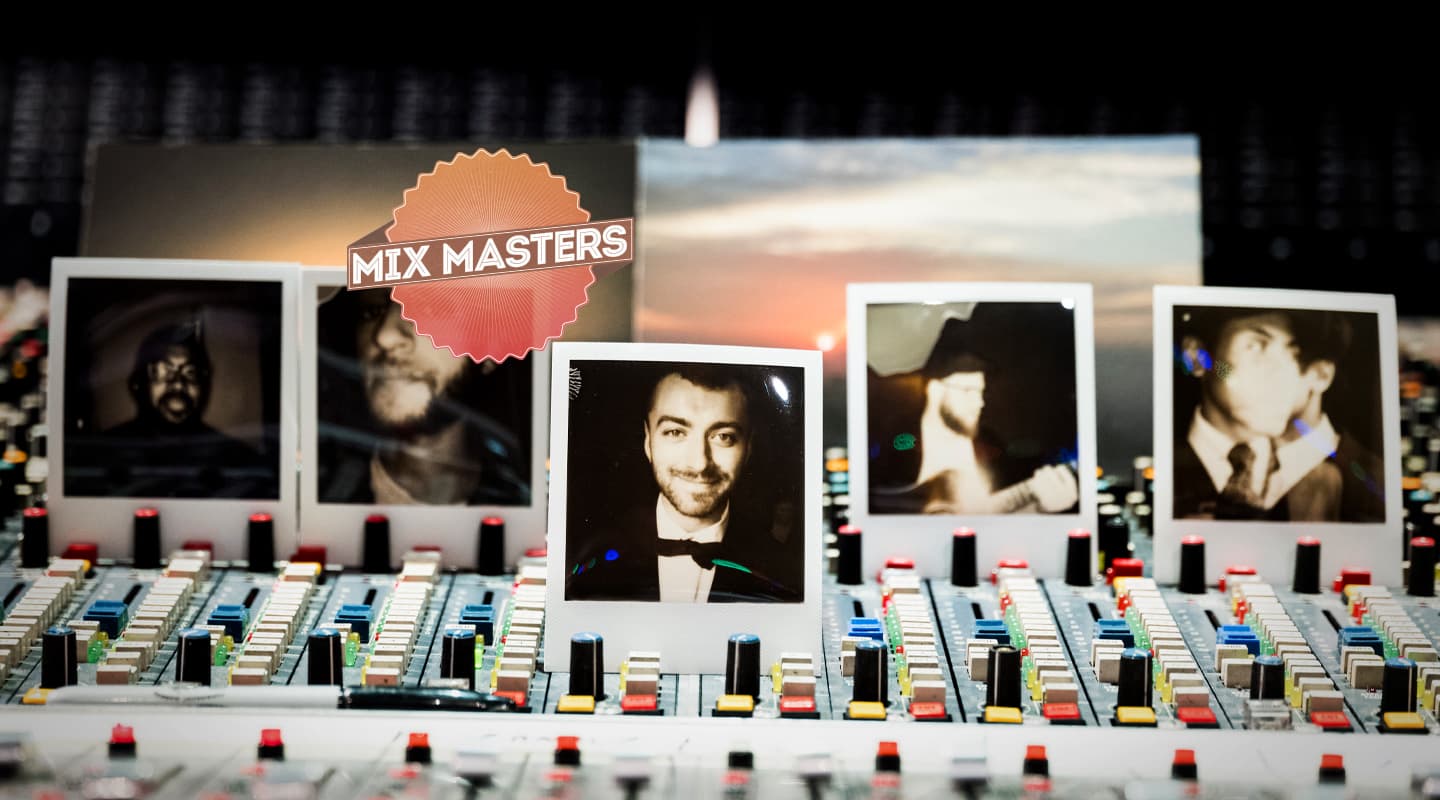
Mix Masters: Keeping Sam Smith Thrilling
Keeping Sam Smith Thrilling How to record a pop album live to tape without any tuning.

Artist: Sam Smith
Album: The Thrill of It All
Not a single note of Sam Smith’s vocals has been tuned, swears producer Stephen Fitzmaurice. Well… there was one note. “It bothered Reuben James, the piano player,” explained Fitzmaurice of the solo offender. “Then Sam asked me to try it without that note tuned, and it was fine. So we ended up with no tuning whatsoever on this record.”
He’s talking about The Thrill of It All, Smith’s latest album, and a continuation of his and Smith’s creative partnership that’s included mixing, engineering and co-producing uber-hit Stay With Me and the award-winning James Bond song, Writing’s On The Wall. Keeping the vocals ‘honest’ is integral for Smith, and Fitzmaurice knows it. Those marks of authenticity and vulnerability are what distinguishes him from the sugar-coated pop perfection of Katy Perry, Britney Spears and Taylor Swift, despite sharing a long list of co-writers with them.
TAPE TRACKING AT RAK
Fitzmaurice is required personnel when it comes to a Sam Smith record, but not until the day comes to set up mics. The entire songwriting process of The Thrill of It All, including choosing co-writers, was masterminded by Smith, co-producer Jimmy Napes, Smith’s label, and his managers. “Sam tried lots of people,” explained Fitzmaurice, “and many songs were written, some of which ended up on the record. I didn’t play a part in any of that. I was booked in January (2017) to start recording on May 1st at RAK Studios in London, the same place where I recorded his previous album.”
From his studio at Pierce Entertainment in West London, the Irish producer detailed what happened next, beginning with the broad brush strokes. “Sam was very adamant he wanted to record with the same band, so we did with the exception of a different guitar player,” he began. “Sam also wanted to record the album in the same way as last time; the band playing live in the studio with him singing at the same time.
“Both Sam and Jimmy really wanted to record the new album to tape. They’d been listening to records made on tape, and done some songwriting sessions using tape, so it was possibly a romantic idea. I was the only one old enough to actually have worked with tape, and I’m aware of the pitfalls, so I told them the cons — tape hiss, you can’t do loop record, and so on. Sonically, I don’t think there’s much difference anymore with digital. I actually prefer to record drums digitally, because it retains the transients better, especially of the kick and snare. On the other hand, Sam’s voice benefitted from recording to tape, because I hit it quite hard with his vocal which smoothed out some of the hard transients.”
HANDCUFFED TO THE JOB
The RAK band sessions mostly took place in Studio 1, which sports a 48-channel API desk, and a large live room that can hold up to 35 people. “For the first month at RAK we hired the entire building,” said Fitzmaurice. “We recorded the band in studio 1, and had the guitar amp, as well as a Leslie speaker and a bass amplifier, in studio 2, so there was no spill.”
The basic tracks took shape over a two-and-a-half week period. Occasionally the demos were used as a building block, which is why additional studios are listed in the credits. Sessions would start in the morning, giving Fitzmaurice a couple of hours to work on sounds, and change drums or guitar sounds while the band rehearsed the day’s song.
“Sam would come in around lunch,” said Fitzmaurice. “We’d do two or three takes after lunch time, and we’d be done. Sam would go home, we’d do a comp and some of the band members might do an overdub. The band would leave by five or six in the evening, after which engineer Darren Heelis and I would stay behind, and would do more editing and comping. I don’t like letting stuff get on top of me! By the end of each day we’d have the bones of a record.”
It was all tracked to RAK’s Studer A800 Mk3 tape machine, and Fitzmaurice made the intriguing decision to forego 24-tracks for a 16-track head. “I decided that if we’re going to use tape, I wanted to use the format that imparts more analogue character, which is what Jimmy and Sam were after,” said Fitzmaurice. “What I didn’t fully think through was that I was handcuffing myself. In the end I really enjoyed the discipline of getting a live band of five people onto 16 tracks; it meant making decisions early! Everybody is using so many microphones and tracks these days and keeping all their options open, it was great to be focused like that. When the band came off the floor, the playback immediately sounded pretty good, because the tracks were already blended and bounced.”
A singer like Sam is telling a story with each song. Everything is led by his voice; the band plays to him
The band mostly plays to click, or occasionally elements of the songwriting demos like Timbaland’s contribution to Pray, the backing vocals from Too Good at Goodbyes, and Malay’s drum programming in Say It First. Crucial to getting that initial balance on tape was feeding the performer’s a headphone mix that would enable them to balance around Sam’s voice, said Fitzmaurice. “A singer like Sam is telling a story with each song. Everything is led by his voice; the band plays to him. Earl Harvin, the drummer, has the vocal really loud in his headphones, so if Sam goes up in intensity, he can go up a little bit as well. If Sam sings really intimately, he can play more softly.
To capture those nuances of the drums on Too Good at Goodbyes, Fitzmaurice employed three mics on the snare alone. Above the snare he taped together a Shure SM58 and AKG 451 pencil condenser “so they were bang in phase,” said Fitzmaurice, “and the 414 was underneath. All the drums were going through Neve mic pres. I already had four of my own, then I bought another rack of 12 1081 preamps from Air Studios.
“We had a really boring day listening to DIs for the bass guitar, which was a Fender Precision with flat wound strings, just like James Jamerson. We ended up choosing the Motown remake by ACME. We had both an upright and a grand piano in the studio, but the grand piano didn’t sound right for this song, so we recorded the upright with one Neumann U67, so it was mono.”
STRINGING THINGS ALONG
Following the main tracking sessions, Fitzmaurice and Heelis split off to really get things moving. “While I did some editing and rough mixing in Studio 1, Darren would be in Studio 2 adding samples to drums, trying a loop, or chopping up something from a demo to make it fit with the live performance,” said Fitzmaurice. “We always recorded the bass DI, and Darren might try how that sounded re-amped through an Ampeg bass amp. If he liked things, he recorded them into Pro Tools, so I could listen to it. Meanwhile Jimmy might be busy comping vocals in Studio 3 or trying a different string arrangement.”
As with the choir and brass, the strings were overdubbed to the band recordings. “We did the strings over two days at RAK,” said Fitzmaurice. “The biggest ensemble was 23 players, which was a bit of a squeeze, but I really like the sound of strings there. The room is a bit smaller, and has a warm, woody sound that sounds a bit closer and rawer than a bigger room. It’s less orchestral. Simon Hale, who arranged and conducted the strings, also really likes the sound of strings at RAK. I overdubbed the strings directly to Pro Tools because — in the context of the string section’s huge dynamics — I didn’t want tape hiss, or risk the tape machine or CLASP system going down with 23 string players looking at me!
“The choir was recorded in one day in the big room at AIR Studios. We ended up with 16 singers and I really wanted to be in a slightly larger room so I could put up some ambient mics. Then in June, after we finished all the recordings, we moved to my studio at Pierce Entertainment, where I did the final mixes. The whole project was pretty continuous from May 1st until I delivered the last mix on July 20th.”

CONSOLE ROMANCE
At Pierce, Fitzmaurice starts all his mixes on his Neve VR72, but doesn’t complete them on the desk. Instead, he prints elaborate stems and finishes each mix in-the-box.
“I’ll give up the moment I have to mix entirely in the box,” commented Fitzmaurice. “One reason to use a desk used to be the sound, but HD is pretty close now, so that’s no longer a major consideration. Instead, the main reasons to mix on a desk for me are to do with ergonomics and feel. Automation on a desk is easy and intuitive, and it’s far quicker for me to get a balance than in the box. I also know exactly what the sound is of me sitting in front of a desk with near fields on top of it. There’s a certain romance to working with a desk as well; it makes me feel like I’m making a record.”
The romanticism ends with practicalities, explained Fitzmaurice: “In the past you’d do your board mixes with everyone in the room, and you’d get instant feedback. The problem is that now you send the mix out to people all over the world, and they may not get back to you until days later. I can’t sit around waiting for their comments. No one will pay to do recalls anymore, so I need to be able to change things at the drop of a hat, and you can only do that in the box. If I still want to use a desk, the only solution is to work with stems. I stem out many different tracks, because it gives me a lot of flexibility in the computer. You can be quite free when mixing stem sessions. Sonically everything is in good shape and the levels are set, so if you play everything back with the faders in a straight line, it sounds like a record.”
Fitzmaurice usually spends about half a day mixing on the console, employing various outboard EQs and compressors: “I get a basic balance and the basic sonics, do some vocal rides, and maybe add a Bricasti reverb to the vocal, which I print,” said Fitzmaurice. Though the ratio between time on the desk and in-the-box can vary depending on the mix. “Sometimes I start a mix on the desk and within an hour it sounds great, and it ends up being 99% a board mix. One Last Song was an example of that. I never could get the rough mix of that sounding right because we had this really loud 16th-note hi-hat from the original drum loop, which did your head in, but if you pulled it down, it lost the energy. At Pierce it immediately sounded good, so the desk mix was the final mix, though I still made stems in case people wanted tweaks.”
For the stemming process it all goes into his Avid HDX rig running Pro Tools 12. “I use an Antelope Atomic Clock which gives me better phase, stereo image, tightness and bottom end,” he said. “When I stem tracks, I send them through my analogue mastering chain, which consists of an Avalon 2055 EQ, going to a Manley Vari-Mu Compressor, into a Chandler Curvebender EQ then a Chandler Zener Compressor and finally into my Crane Song HEDD A-D/D-A converter.”
SUBLIMINAL SONICS
Working for years with The Buggles’ Trevor Horn — who was also a one-time frontman for Yes and produced Seal’s classic, Kiss From a Rose — Fitzmaurice learnt to “hate boring, un-dynamic records, both level-wise and sonically. There’s drama all the time in his productions. The second verse can never be the same as the first verse.
“I struggle with the eight-bar loops in many of today’s records. I mix loads of records where the lead vocal is copied across to every chorus, the backing vocals are the same throughout much of the song and many of the instruments are as well. I never ever set a reverb on a vocal and just leave it. I’ll constantly ride it, and maybe add a little slapback delay in the verses, then an eighth note delay in the chorus. You might not notice these things consciously, but subliminally you do.”
I overdubbed the strings directly to Pro Tools because… I didn’t want tape hiss, or risk the tape machine or CLASP system going down with 23 string players looking at me!












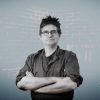




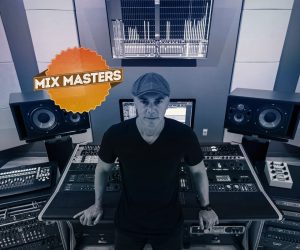

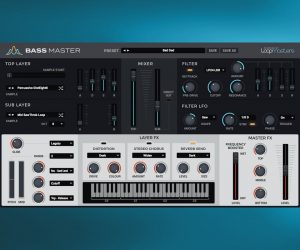





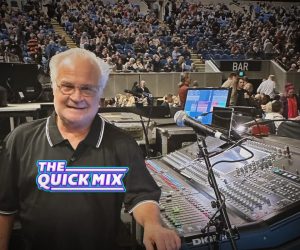





RESPONSES